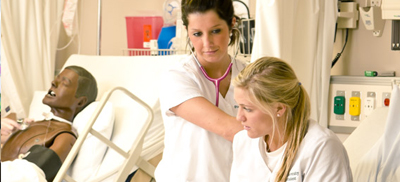This week, we are introducing a new blog series focused on population-based healthcare. The series will analyze and discuss issues regarding the current structure of healthcare in the United States and how to properly address and prevent those issues from occurring.
The United States is the number one healthcare spender in the world. Typically, the more effort and money put into something, the better the outcome, right? Unfortunately, that is not the case in terms of healthcare quality. According to a Bloomberg Health-Care Efficiency Index that draws its information from sources including the World Bank as well as World Health Organization, the United States is not even ranked in the top 10 nations with the best healthcare quality. While considering how to improve healthcare quality and lower costs, population-based care is viewed by many professionals as the future of healthcare.
What is Population-Based Care?
Population-based care is a term that many people are becoming aware of, but do not fully understand. Population-based healthcare is the idea that refers to meeting the healthcare demands of certain populations, rather than on an individual basis. This allows medical workers to maximize their potential by dealing with subsets of individuals and providing them the essential care they need rather than dedicating their attention to one patient at a time. An aging population of nurses means that soon, the U.S. will be faced with a big shortage of nurses. According to the Bureau of Labor Statistics, there will be approximately 1.09 million nursing job vacancies. With three million current nurses, losing over a third of the workforce would be a devastating blow to our current healthcare system.
Why Population-Based Care is Needed?
Along with an impending increase in the senior citizen population in the United States, there will be a spike in the demand for a larger healthcare workforce. This firstly needs to be addressed by having adequately trained nurses as part of our workforce. According to a report by the American Association of Colleges of Nursing, “U.S. nursing schools turned away 64,067 qualified applicants from baccalaureate and graduate nursing programs in 2016 due to an insufficient number of faculty, clinical sites, classroom space, clinical preceptors, and budget constraints.” These types of constraints severely limit the potential for the medical field to grow. With over one million nurses needed by 2022, major changes are required in order for nurses to be properly equipped with the skill-set necessary effectively care for our population.
Dangers of Lack of Healthcare Accessibility
When looking at population-based healthcare, a key factor to consider is how accessible healthcare and resources for maintaining a healthy lifestyle are to every member of our population. The United States Department of Agriculture reports that 23.5 million Americans live in a food desert, meaning they live in an area where fruits, vegetables, and other healthy foods are unavailable. Imagine a scenario where an elderly patient with no means of transportation is suffering from heart disease, the leading cause of death in the United States according to the Centers for Disease Control and Prevention (CDC). Assuming they are hospitalized; upon release, they would be given certain dietary guidelines and medicines to take.
A key part of managing heart disease is to lower daily sodium intake. Food deserts lack any foods with prominent nutritional value, mainly offering processed foods. As sodium is used as a preservative or flavoring for the vast majority of processed foods, the patient ends up in a situation where their condition is deteriorating, rather than improving. This scenario is why population-based healthcare is so important.
Accessibility also involves how easily patients are able to reach their healthcare provider. In reference to the scenario above; should the patient ever collapse, put on unhealthy amounts of weight, or stop taking their medication, the healthcare provider can do nothing to help the situation because they are not aware of it. In many areas, residents do not have readily accessible healthcare, causing a lot of obvious symptoms to go unnoticed and therefore untreated.
More on Population-Based Care
In the next installment of our population-based healthcare series, we will look deeper into the role of nurses in today’s healthcare structure, as well as social determinants and how they factor into healthcare accessibility.






